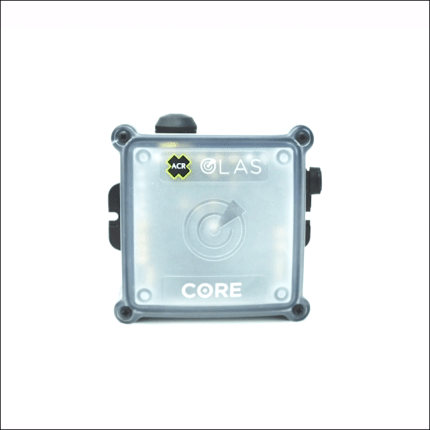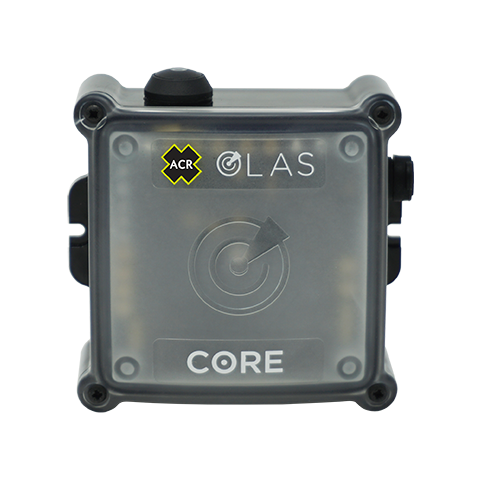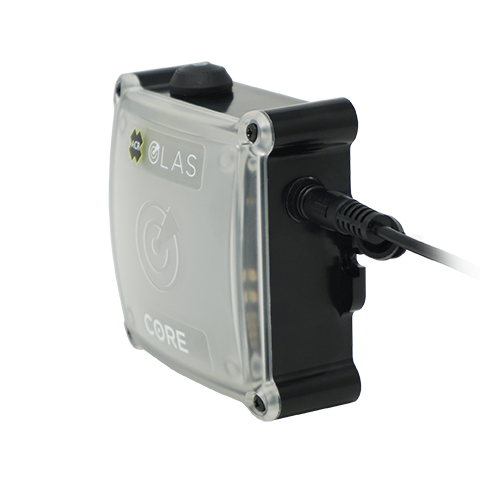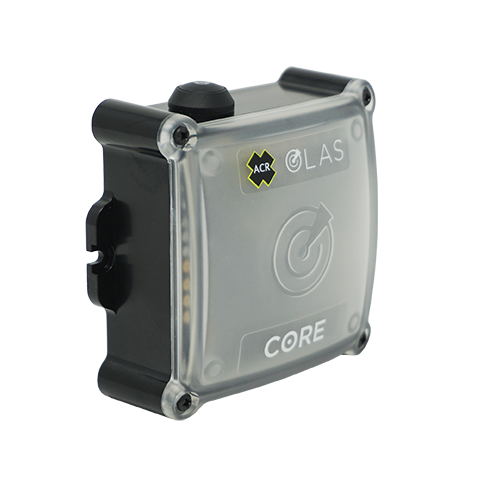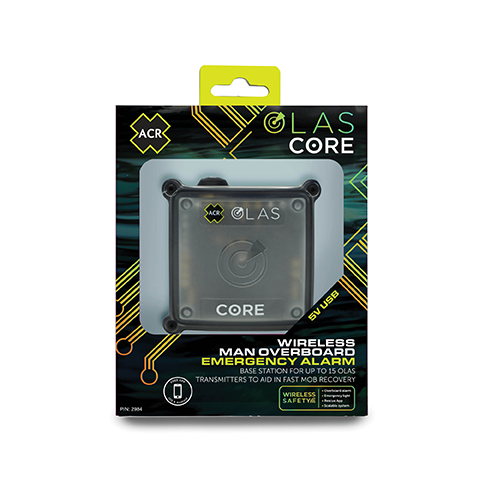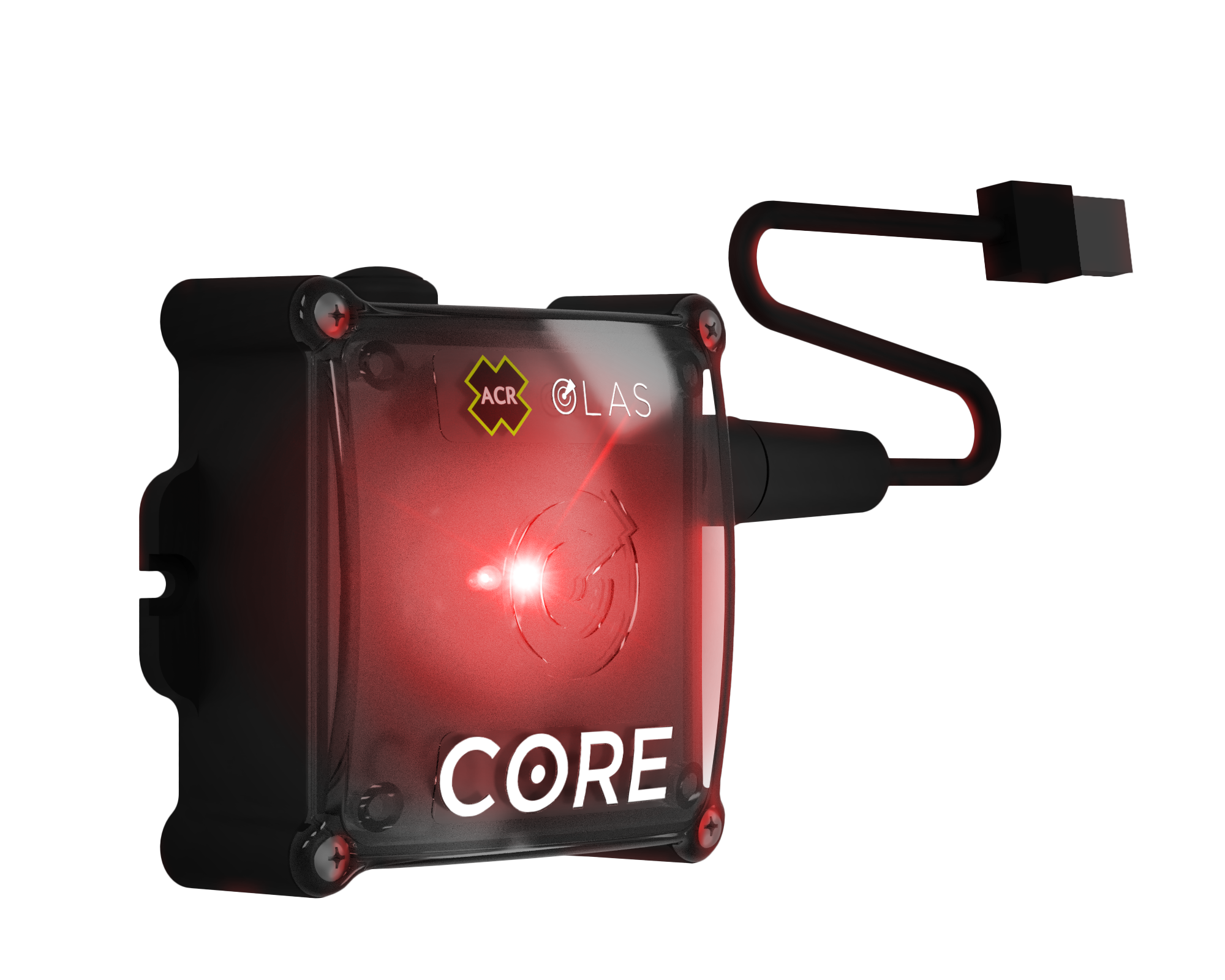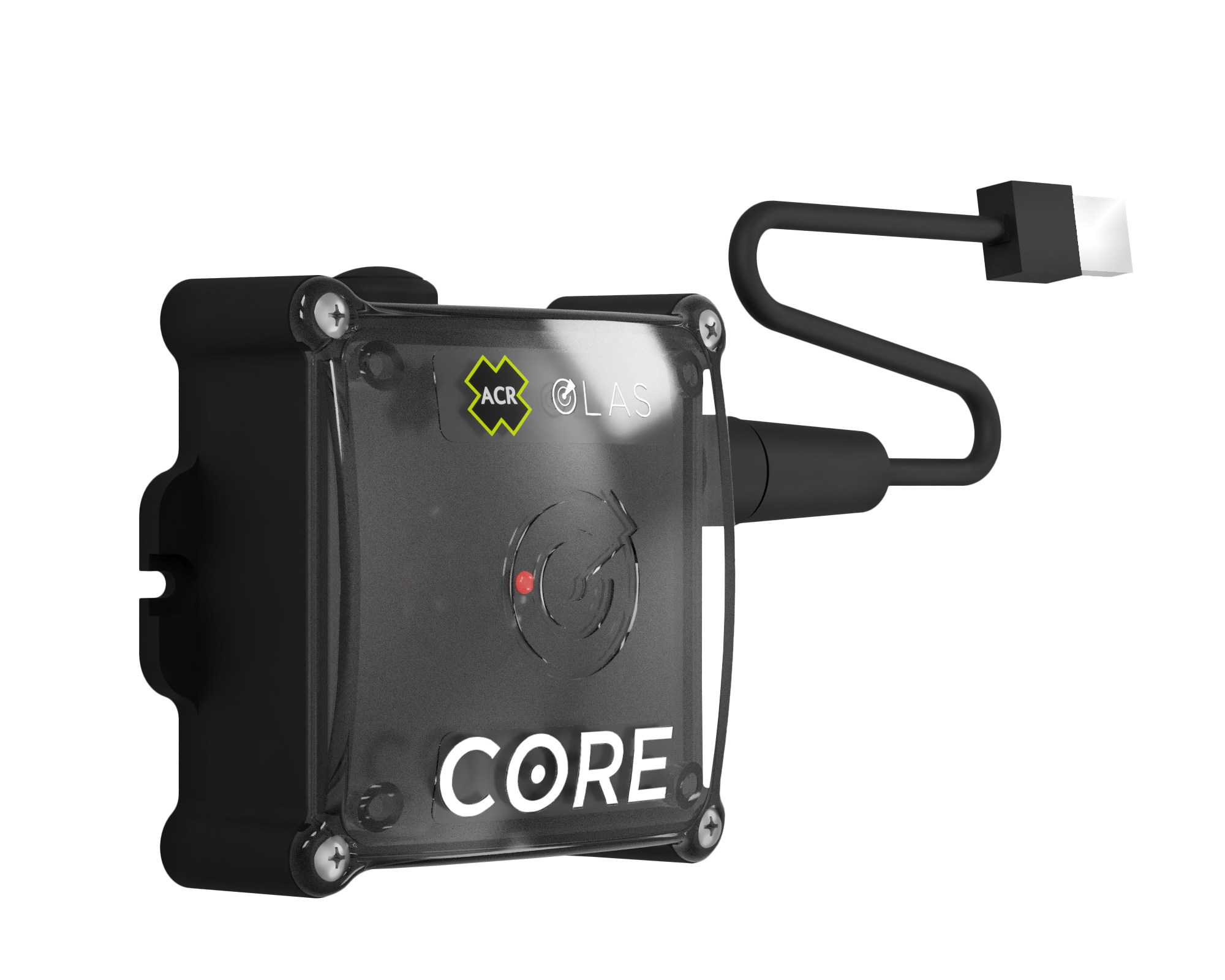Can Core or Guardian operate without the mobile app?
Yes, the Core and Guardian can set-up, monitor and alert without requiring the OLAS mobile application. Through light indication on the switch and sound signals from the hub, the user can easily check the number of OLAS transmitters being tracked and the state of the device i.e. scanning, tracking, paused or alarming. The OLAS mobile app is only required as an additional tool to aid in setup and monitoring the OLAS system. The OLAS app also acts as an extra alarm and includes rescue screens to aid in MOB rescue including scripted Mayday call and Solo mode, an automated text message for use whilst on your own, within cellular range (minimum 2G or Wi-Fi required).
What is the difference between the Core and the Guardian?
The Core is a portable MOB alarm system which can be plugged into any 5V USB power socket. It has an emergency light and internal alert to indicate a MOB.
The Guardian is a hard-wired solution which can operate from 10-24V. The Guardian can be wired into a vessels existing kill switch, stopping the engine in a MOB situation. The same wiring solution could also be used to activate an external MOB alarm system. The Guardian has an emergency light and internal alert sound to indicate a MOB.
When an OLAS transmitter is switched on, will it automatically be tracked by the OLAS system?
A previously untracked OLAS transmitter needs to be brought within a few meters for it to be tracked automatically.
If an OLAS transmitter has previously been tracked by the Core or Guardian, then it will be automatically tracked when it is within ‘near’ proximity, around 3 meters from the Core or Guardian.
How should I maintain the Core?
Ensure the Core remains clean and dry. If it becomes wet, clean with fresh water, avoiding the charge port and dry ensuring no water is left in or around the charge port or buzzer. Keep the Core out of direct sunlight.
My boat is longer than 50ft, can I still use the Core or Guardian?
Yes, but it is likely you will need to add an OLAS Extender to the system which will allow use on vessels up to 80ft using a single Extender or 100ft with 2 Extenders.
What is the maximum distance I can go from the Core or Guardian without triggering the alarm?
The distance can vary depending on where the Core or Guardian is installed and the material of the vessel. If the Core or Guardian is located centrally in a vessel effective coverage of a vessel up to 50ft can be achieved. If a transmitter is submerged in open water, it will disconnect immediately even if within the 50ft range.
Can an OLAS transmitter leave the vessel without triggering an alarm?
Yes, but the OLAS system will either need to be in Pause or the individual tag will need to be in a paused state. To pause tracking of individual OLAS transmitters the OLAS app should be used. To pause the whole OLAS system either the OLAS app or the Core / Guardian hub can be used.
When the OLAS system is paused, if an OLAS tag leaves the vessel and does not return can the OLAS system re-start tracking?
It is not possible for OLAS to restart tracking until all OLAS transmitters are back in range. If you try to restart tracking a triple beep indication will occur from the hub. If the OLAS transmitter will not return the OLAS system needs to be restarted. Previously tracked tags will be tracked transmitters will be automatically tracked again when they are brought back within 3 meters of the Core or Guardian.
What should I do when an OLAS transmitter has set off the alarm and then been recovered back to the vessel?
Bring the OLAS transmitter back within 1 meter of the Core or Guardian hub. If the Core or Guardian hub is still alarming press the button once to pause the alarm and then press the button again to restart tracking.
After the tag has been brough back within 1 meter tracking will automatically restart after 1 minute if it has not already been restarted.
How can I check to see how many OLAS transmitters are being tracked?
Press the switch on the hub once, it will then indicate the number of tracked OLAS transmitters with a sound and a light signal.
Alternatively, the OLAS mobile app will display any OLAS transmitters within range.
The alarm is not triggered when I put the OLAS transmitter into a bucket of water?
The OLAS transmitter needs to be submerged by up to 4 inches in open water. If submerged in a bucket the wireless signal can transmit out of the side and bottom of the bucket.
If I switch the OLAS tag off will this trigger the alarm?
Yes, switching the OLAS tag off is the same as disconnecting the OLAS tag by falling overboard or submerging it in open water. We recommend testing the OLAS system regularly.
The OLAS T2 can be set-up to either activate the alarm when switched off or to switch off silently. The alert function can be adjusted in the OLAS mobile app.
What measures can I take to ensure optimal performance of the OLAS technology when using the Mobile App:
- Do not connect other Bluetooth devices whilst using the OLAS app
- Ensure the OLAS app is at least 1 meter from other RF transmitting devices
- Select ‘Always’ for location access in your App settings
- Allow notifications
- Only 6 OLAS tags should be ON within range of the OLAS app (if tracking without the Core or Guardian)
- Avoid carbon, metal or water as this will block the OLAS data
- Always check connections prior to setting off
What is the minimum phone requirement?
iPhone 5 onwards / 3rd generation iPad onwards / Android 4.4+ / Bluetooth LE (The Bluetooth chip in some Android devices can vary, always check compatibility after purchase and return if not suitable).
What is the maximum distance / Yacht size?
Direct tracking with the OLAS app is suitable for vessels up to 30ft
Tracking via the Core or Guardian is suitable for vessels up to 50ft
Tracking using additional Extenders is suitable for vessels up to 100ft.
Always test the range limitations to avoid false alerts.
Does the tag transmit GPS?
No, the GPS is taken from your mobile device running the OLAS app. It is recorded at the time of alarm, like pressing the MOB button on a chart plotter.
Where does the OLAS app direct back to?
The app is always directing back to the last known location of the OLAS tag I.e. the point at which the alert sounded.
What is the battery life?
If turned on and left on for up to 4 months. Every time the OLAS tag is switched OFF/ON more power is used. On average around 3 months.
How many phones can use the OLAS app?
Any compatible phone can download the OLAS app.
The OLAS app is free of charge and will be updated regularly as and when technical advances are made.
Is the battery user replaceable?
On the OLAS tag yes, it uses a CR2477. On the OLAS Float-On and OLAS T2 the battery is rechargeable.
How many OLAS transmitters can be attached to 1 phone?
Up to 6 transmitters can be tracked. Ensure no more than 6 are within range of the phone to avoid false alarms.
Can I use a mixture of OLAS tags and OLAS Float-On’s?
Yes, you can use both connected on the same app. They will automatically indicate which is which.
How do you identify different tags?
When first purchased the tag or Float-on will have a number that will also be represented when it is seen in the app, the name of the tag or Float-On can then be changed. The app can also be used to revert back to the original number.
How can I monitor the battery?
The OLAS tag indicates its battery status in the OLAS app. If the app is running when the level gets below 10% is indicated in the OLAS app.
The OLAS Float-On has battery indication using the traffic light system. When a charge is necessary it will illuminate solid red.
What happens if there are more than 6 OLAS transmitters around 1 device?
The 7th OLAS transmitter may push one of the previous 6 from the list causing a false alert. For this reason, only 6 devices can be used within range of the OLAS app.
What are the optimum OLAS app settings to avoid false alerts?
‘Always’ should be selected in your App settings and notifications should be allowed.
Can I have a different Bluetooth device connected?
No. If using the OLAS app it should not have any connections with external Bluetooth devices.
What is the proper method for testing my OLAS TAG or OLAS FLOAT-ON Transmitter in order to provide the most accurate representation of how the mobile app will communicate with the transmitter in a man overboard (MOB) scenario?
- Only test 1 OLAS TAG at a time
- Testing whilst on a moving vessel gives a more accurate representation of how the system operates. The test can also be carried out on land.
- Ensure the OLAS TAG you are carrying the test out with is either switched off to cause the alert or fully out of range by submerging in at least 6 inches of open water. Leave the TAG submerged for the entirety of the test. If the TAG is removed from the water or switched back on whilst still in range of the mobile device the TAG will reconnect and OLAS will resume normal tracking. Placing the TAG in a sink or glass of water will not work.
- You will see TAGS status change from Green reading “Immediate,” “Near,” or “Far” to Red reading “Paused” to “Unknown”
- After 8 to 12 seconds the alarm will sound
- Accept the alarm and then walk away from the TAG. A searching icon will appear to indicate that you are still within 20 meters of the point of loss and would be within visual contact of the man overboard (MOB)
- Having walked approximately 20 meters from the TAG, the searching icon will change to an arrow pointing back towards the point of loss. Continue walking for a further 20 meters, this will simulate the vessels onward movement prior to stopping and changing direction to perform a search and rescue.
- When you reach around 40 meters from the point of loss turn around and follow the arrow
- Once back within 20 meters the searching icon reappears, this would indicate when you should initiate a search protocol based on the wind and tidal conditions
- Once back within 20 meters either switch the TAG back on or remove it from the open water and it will automatically reconnect, cancelling the alarm (if tracking directly with the OLAS app). If tracking via a core or Guardian the alarm needs to be manually paused.
